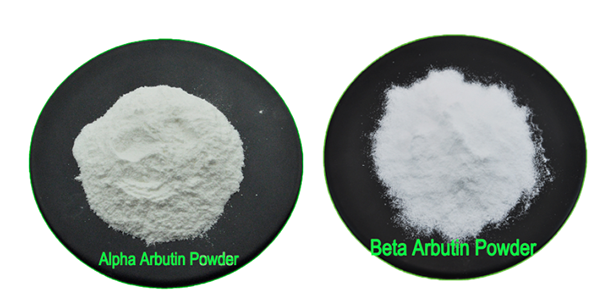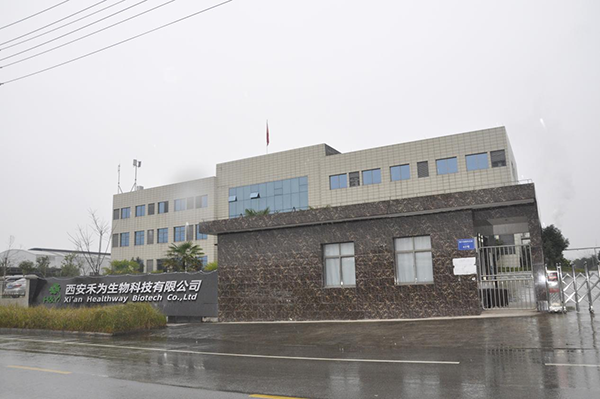Arbutin, also known as arbutin, appears as white needle-shaped crystals or powder. Extracted from bearberry leaves, it can accelerate the decomposition and excretion of melanin, thereby reducing skin pigmentation, removing spots and freckles, and also has bactericidal and anti-inflammatory effects. Mainly used for the preparation of high-end cosmetics.

Arbutin is a natural active substance derived from green plants. It is a skin depigmentation component that combines "green plants, safety and reliability" and "efficient depigmentation". It can quickly penetrate into the skin without affecting cell proliferation. At the same time, it can effectively inhibit the activity of tyrosinase in the skin, block the formation of melanin, and accelerate the decomposition and excretion of melanin by directly combining with tyrosinase, thereby reducing skin pigmentation, removing spots and Freckles, and does not produce toxic, irritating, sensitizing or other side effects on melanocytes.

It also has bactericidal and anti-inflammatory effects. It is the safest and most effective whitening raw material popular today, and is also an ideal skin whitening and freckle removal active agent in the 21st century.
According to the direction of the glycosidic bond in space, arbutin is divided into beta-arbutin and alpha-arbutin. The molecular formulas of the two are exactly the same, but the spatial structure is different, and the direction of the glycosidic bond is exactly opposite.
Currently known arbutins include α-arbutin, β-arbutin and deoxyarbutin. α-arbutin and deoxyarbutin are generally obtained through synthetic methods, while β-arbutin can be obtained from many sources. It is isolated from various plants, such as rock cabbage, black rice tree, bearberry and pear tree. β-Arbutin has been found in the leaves. Its chemical name is 4-hydroxyphenyl-β-D-pyran. Glucoside. α-Arbutin is the epimer of β-arbutin, its chemical name is 4-hydroxyphenyl-α-D-glucopyranoside, and the direction of its glycosidic bond in space is the same as that of β-arbutin. Glycosides are the opposite.
Arbutin is easily soluble in hot water, methanol, ethanol and aqueous solutions of propylene glycol and glycerin, but is insoluble in ether, chloroform, petroleum ether, etc. Melting point: 198 -201℃. Stability: Arbutin is unstable under acidic conditions and is easily hydrolyzed. Arbutin can be combined with fatty and lipoid components from animal and plant minerals, chemical synthesis and artificial compounding, such as fatty oils and ester oils, also known as chemically synthesized oils, fats, rich fats, ester waxes, fatty acids, and fatty alcohols. , sterols, mono- or bis-fatty acid esters of polyhydric alcohols, sterol fatty acid esters, grease waxes with alkane chemical structures, cyclic chain polydimethylsiloxane, as well as grease-based pigments, vitamins, preservative components, anti- Auto-oxidizing components, etc., do not interfere with each other. The aqueous solution of arbutin forms a water-soluble light black complex with low iron or high iron, which can undergo a precipitation reaction with basic lead acetate. Therefore, it is required that the conductivity of water added to the formula should be lower than 10. It is not advisable to add guar gum to formulas containing arbutin, otherwise its stability will be affected. Adding an appropriate amount of vitamin E (usually 1% -3%) to the formula has a stabilizing effect on it, and adding an appropriate amount of sodium bisulfite to the formula can prevent the paste from discoloring.

Arbutin has a wide range of applications and is commonly used in whitening formulas
1) Liposomes: Several arbutin liposomes were prepared using membrane dispersion method. Compared with the solution, although the penetration rate of arbutin liposomes is reduced, its deposition rate in the epidermis/dermis layer is increased.
2) Coating agent: Using an emulsion preparation method, using polymer polyvinyl alcohol as the film-forming material and adding azone as the penetrating agent, a compound arbutin emulsion film is made for the clinical treatment of chloasma. The results show that the formulation has stable properties, is smooth and easy to coat, and has excellent film-forming and release properties. Some people have also used the same film-forming material, added arbutin and Chinese medicine extract to make a coating agent, and used it clinically to treat chloasma. The total effective rate was 96.9%, and no adverse reactions were found.
3) Cream: Cream contains all-trans retinoic acid, arbutin, and vitamin E, and is used to treat chloasma. Clinical observation showed that the total effective rate in the treatment group was 77.6%, and the total effective rate in the control group was 26.5%. An anti-freckle cream was made using 3.5% -4% arbutin and several traditional Chinese medicines (white peony root, astragalus root, etc.) for the treatment of chloasma. The total clinical efficacy rate was 83.0%, and no adverse reactions occurred in any case.
4) Cosmetics: Many countries in the world have applied arbutin to cosmetics to have a whitening effect. Such as Japan's internationally renowned brand Shiseido and so on. There are also many cosmetics in China that add arbutin, such as Dingjiayi brand cosmetics.
Xi'an Healthway Biotechnology Co., Ltd. is mainly engaged in: Plant extracts, Chinese herbal medicine powder, biochemical raw materials, and natural extracted raw materials. It has a strong factory with complete qualifications such as HALAL, kosher, ISO9001, ISO22000 certificates, etc. Welcome to contact us to discuss cooperation.
Mobile Phone: 86 18691558819
Irene@xahealthway.com
www.xahealthway.com
Wechat: 18691558819
WhatsApp: 86 18691558819
Post time: Apr-25-2024





